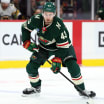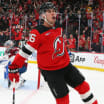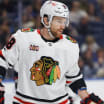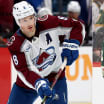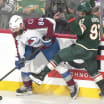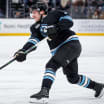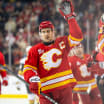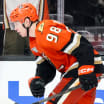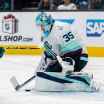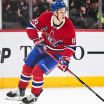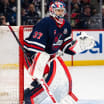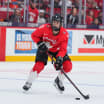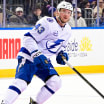TORONTO -- The game is over. The rink is quiet. Cody Morgan comes out wearing a business suit and a Toronto Junior Canadiens toque. He greets his parents, drops his equipment bag and sits at a picnic table in the lobby. His body, finally, for a few minutes, is at rest. But his heart and mind are still going hockey, hockey, hockey.
When he was younger, his father would take him to see the older kids play. Morgan saw Max Domi, Sam Bennett, Robby Fabbri, Connor McDavid and Mitch Marner play in the Greater Toronto Hockey League.
Now he's 15, a top prospect himself with the Junior Canadiens in the GTHL. He sees those older kids he watched so recently in the NHL already: Domi with the Arizona Coyotes at 21; Bennett with the Calgary Flames and Fabbri with the St. Louis Blues at 20; McDavid with the Edmonton Oilers and Marner with the Toronto Maple Leafs at 19.
Greater Toronto Hockey League: Where NHL dreams begin
Youth program in home of Centennial Classic has helped make Maple Leafs what they are today
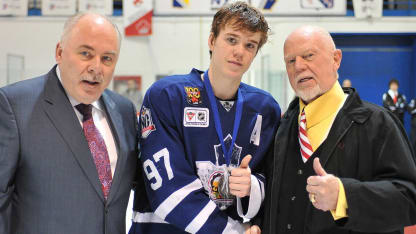
The dream doesn't seem so distant.
"That could be me one day," Morgan says.
When the Maple Leafs play the Detroit Red Wings outdoors in the 2017 Scotiabank NHL Centennial Classic (3 p.m. ET; NBC, SN, TVA Sports) on New Year's Day, the NHL will launch its Centennial celebration and the Maple Leafs will commemorate 100 years in the League.
The GTHL has helped make the NHL, the Maple Leafs and Toronto hockey what they are.
The GTHL is older than the NHL. It has produced countless NHL players, including Hockey Hall of Famers Paul Coffey, Charlie Conacher, Ken Dryden, Bill Durnan, Mike Gartner, Red Kelly, Eric Lindros, Larry Murphy, Adam Oates, Brad Park, Brendan Shanahan and Nels Stewart.
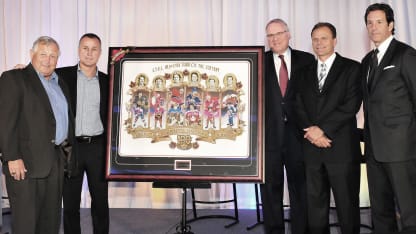
"So many of us relied on that league," said Shanahan, who is Maple Leafs president. "It's incredibly important."
Today it is the biggest youth hockey league in the world, with about 38,000 players aged 4 to 20, and about 10,500 in what are considered competitive leagues - the A, AA and AAA levels. The vast majority of players will not compete at a high level. But the talent pool is so deep, the training so advanced and the competition so intense, a relatively large number go on to play in junior, college, the minor leagues and the NHL.
The GTHL had 64 alums on opening-night NHL rosters this season, including Brent Burns, Mike Cammalleri, Mark Giordano, Sean Monahan, Rick Nash, Ryan O'Reilly, Alex Pietrangelo, Tyler Seguin, Jason Spezza, P.K. Subban, John Tavares and Tyler Toffoli. Twenty-six of the 30 NHL teams had at least one GTHL alum.
"It prepared me pretty well," Marner said. "It's a time that you just enjoy hockey and playing it. I think that really helps you going forward."
The question constantly is who will be next.
Don Cherry often catches GTHL games with son Tim, an Ontario Hockey League scout, and mentions the league on his hugely popular "Coach's Corner" segment on "Hockey Night in Canada."
OHL scouts, NCAA coaches and agents packed Scotiabank Pond Arena along with fans for the GTHL Top Prospects Game on Dec. 13.
"It's such a monster in terms of size," OHL commissioner David Branch said. "It's certainly one of the top development systems."
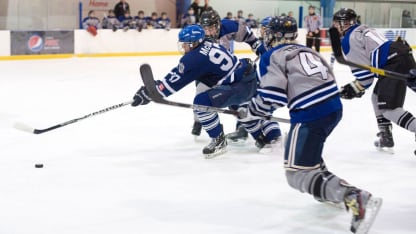
GTHL executive director Scott Oakman says a conservative estimate is that the league has 50,000 to 60,000 games a year. It plays 540 games a week in its competitive leagues alone. It makes every night in Toronto a hockey night, kids playing and parents watching in rinks across the Greater Toronto Area.
"It's the heartbeat, man," said Sportsnet analyst and former NHL forward Nick Kypreos, who has been a player and parent in the league.
* * * * *
The league began on Dec. 29, 1911, six years before the NHL was founded. Frank Donald Smith and his friends had not been permitted on school grounds after classes growing up and the police often had admonished them for playing in the street. He wanted to create an organized outlet where kids could play.
So at age 17, he called a meeting at his home at 217 Woodbine Ave. in the neighborhood known as "The Beach" or "The Beaches," a few kilometers east along the Lake Ontario shoreline from where the Centennial Classic will be played at Exhibition Stadium. The result was the Beaches Hockey League -- 99 players aged 18 and under, five teams, outdoors.
Soon other teams from the city and surrounding area wanted to play too. So it became the Toronto Beaches Hockey League and then the Toronto Hockey League. By its 50th anniversary in 1961, it had grown to 12,000 players of all ages with more than 700 teams. Smith was still the general secretary and treasurer. He was inducted into the Hockey Hall of Fame as a builder in 1962 and died in 1964.
"Kids today have it better than we had -- enclosed rinks, artificial ice and much better equipment," Hal Walker, sports editor of the Toronto Telegram, wrote in the THL 50th Anniversary Year Book and Souvenir Program in 1961. "But we had fun on the outdoor cushions even if you sometimes had to resort to toques to keep your ears from getting frostbitten.
"And it was a stark lesson in learning to play clean hockey, because if you drew a penalty and had to stand in the snow for two minutes, your feet were a cinch to turn a deep purple. But 'Smitty,' we forgive you all these tribulations, because you gave us youngsters a chance to get some clean, wholesome fun and helped us form a foundation of friendships which have lasted down through the years."
The league has kept growing and growing. It became the Metropolitan Toronto Hockey League in 1972 and the GTHL in 1996.

The growth should continue, even as other youth hockey leagues stagnate or decline in Canada because of the growth of the GTA, more than 5 million people and counting.
The GTHL condenses the competition, especially at the highest levels. It distills it even further when players outside the GTA -- from as far away as Russia -- come to the Toronto area to play in the GTHL to boost their development. Teams can have up to five imports on their 19-man rosters in AAA, three in AA and A.
"You don't have to travel three hours to get to a game -- well, depending on traffic," said Steve Mercer, a longtime GTHL coach. "You're playing a good game every night, whereas some of the other leagues, on one night you might be playing a good team and then you might be playing a weaker team, and you've traveled two or three hours. You look at some of the [United States teams], they've got to travel to find a good game."
You can see the growth of the next generation, sometimes literally. Mercer coached Marner with the Don Mills Flyers and against McDavid when he played for the Toronto Marlboros.
At 15, Marner wasn't even 5-foot-7, his height when London took him in the first round of the 2013 OHL draft, let alone 5-11, as he was when Toronto took him No. 4 in the 2015 NHL Draft. Mercer had to keep scouts up to date on Marner's growth spurt.
"He definitely grew 5-1/2 inches from the start of the season to the end of the season," Mercer said. "There were times when the scouts were like, 'Yeah, he's good, but he's not very big.' I said, 'Well, look at him now. He's growing. He's growing under my nose.' I'd pull him out [of the locker room to show them], and they'd say, 'He's not that small.'"
Mercer knew Marner was special.
"I said he'd be a pro," Mercer said. "It's fantastic. It's nothing that surprises me, just knowing and coaching him. He's just an unreal kid. He sees the game a different way and he's got the skill set to go with it."
McDavid? Well, even then, everyone could see what he would become, the No. 1 pick in 2015 by the Oilers, the next in the line of great players. Mercer remembers one 6-3 loss to the Marlboros.
"You look down at the game sheet, and he had six points," Mercer laughs. "'Oh, he had six points.' Just all over the game sheet. He's just that good. He was the point whisperer. He didn't look as flashy as he does today, but you knew he was on the ice all the time, and you couldn't stop him. You couldn't stop him. You'd try and slow him down, but it's hard to stop him."
* * * * *
The GTHL still sets out to accomplish Smith's original mission: create an organized outlet where kids can partake in sports. It's about clean, wholesome fun.
There are learn-to-skate programs. There is house hockey and select hockey, which is a level between house and A level. Some scheduling is designed around lifestyle and religion. One community doesn't play on weekends because a lot of its families like to go skiing; another doesn't play on Fridays and Saturdays because some of its families are Jewish and honor the Sabbath.
"The norm expense is you pay $400, $500 at your local house league, and you show up and you play once a week and you practice once a week," Oakman said. "It's an affordable option."
In the competitive leagues, there is an emphasis on development.
"They have been very vigilant on the style of play, really reinforcing the game today is played with speed and skill, and you see that message being delivered not only by their executives but down through the line, the on-ice officials and administrators and the coaches themselves," Branch said. "It's, I think, a very informed attitude and up-to-date attitude serving the best needs of the players."
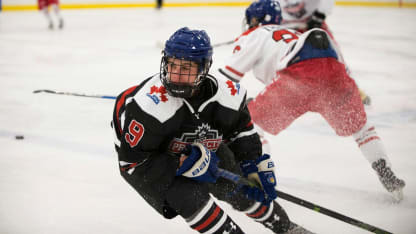
In the competitive leagues, especially at the AAA level up and until the minor-midget year, the year in which players can be drafted by OHL clubs, the commitment is considerable, and the game can be Darwinian. Some players go to specialized private schools. Many receive private lessons in addition to team practices and video sessions. They can play 80 to 90 games, including league games and tournaments, and pay thousands of dollars annually.
"We really have both extremes of youth hockey," Oakman said.
Take Morgan for example: He plays varsity hockey against older players for his high school, Cardinal Carter Catholic High School, and minor-midget AAA in the GTHL for the Junior Canadiens.
This is a typical week for him: Sunday, he plays a game for the Junior Canadiens. Monday, he practices with his high school team. Tuesday, he has a game for his high school team and practice for his GTHL team. He takes off his gear after the game, goes on a Tim Hortons run with his dad, talks hockey, puts back on his gear again and practices.
"I bring two shirts," he said. "I use wet equipment. I like wet equipment better."
Wednesday, he has a game or a day off.
"He needs to rest at some point in time too," said his father, James.
Thursday, he has a video session with his GTHL team, followed by practice. Friday, he has a game with his GTHL team or goes on the ice with a private skating instructor. Saturday, he practices with his GTHL team in the morning and goes on the ice with a private skills instructor at night.
Somewhere during the week, he hits the gym with his personal trainer as well, all while going to school.
That is a lot of time and money. Morgan's father estimates hockey costs $10,000 to $12,000 a year. But here is the key: Morgan is pushing his parents, not vice versa, and his father said he's a good student.
"I just love hockey," Morgan said. "Coming to the rink every day is just a dream. I just want to excel. … I just wake up in the morning, and just live, breathe hockey. That's it. I think about it all the time."
This is what kids and parents need to understand going in.
"They want to make it," said Jules Jardine, who played when the league was the MTHL and now coaches in the GTHL. He also owns a hockey school, World Class Hockey Development. "They just don't know what it really takes. Even at minor-bantam AAA, they haven't gotten a sense yet of what it really takes -- the hard work, the discipline. You're going to have those elite guys. They're going to make it, anyway. But the rest are really lumped in, and it's how hard you work. And that's what you try to teach kids."
This is a reason why the young players who do make it are more polished than ever before.
"You hear the National Hockey League now saying, 'The players we're getting from junior hockey are that much better,'" Branch said. "You look at the number of junior-age players that are stepping into the NHL and playing very well, thank you. It's a byproduct of the system of which the GTHL is such a big part of."
The concern is that it can get out of control and perspective can be lost.
Teams hold tryouts each year, and kids want to play on the best teams at the highest levels. The more A and AA teams act like AAA teams, the more kids seek private instruction, the more kids play spring and summer hockey instead of other sports, the more it snowballs.
"It's almost like if Peter's doing it, Johnny's got to do it, and parents jump on board, and it kind of fuels the fire," Jardine said.
The earlier NCAA coaches and agents pursue kids, snagging as many commitments as possible to increase the odds of landing stars, the more it snowballs too.
"That also fuels the fire, because people hear about it," Jardine said. "It's a very big league but a small community. Now Johnny wants to do extra work. It feeds itself.
"It's very important for kids to have that want to continue to play hockey after they don't make it, because it's a life sport. You want to keep it fun for the kids. You want to give them the life lessons so that they can continue to play as they get older."
Oakman said parents feel if they don't let their kids do it, their kids will be left behind. He worries about premature specialization.
"We're not here to dictate to families what they do outside the hockey system," Oakman said. "But I think we need to do a better job educating people on the proper exposure and progression within hockey programming. I'm sure there's probably 9- and 10-year-old kids who are exposed to way too much hockey. They're one-sport focused. We have to do a better job of teaching parents that they should be developing athletes. They shouldn't be developing hockey players."
Kypreos played in the MTHL and went on to eight seasons in the NHL with the Washington Capitals, Hartford Whalers, New York Rangers and Maple Leafs. He won the Stanley Cup with the Rangers in 1994. He has served as a celebrity coach for the GTHL Top Prospects Game. But his sons, Theodore and Zachary, have played A and AA in the GTHL, not AAA, and that's fine.
"We have a history of producing some of the best hockey players in history, and sometimes the parents are some of the craziest parents in the world," Kypreos said. "The bar is so incredibly high here. Just be realistic with your own kid's bar. Ultimately -- I don't care if you're in Toronto, Dallas, Florida, California -- it's about the smile on your kid's face. Their biggest concern should be if it's not there anymore.
"You don't want to discourage kids with the numbers or the percentages, because then you're quashing a dream. You don't want to do that. But what you want to say is, 'Be a well-rounded 15-year-old -- school, hockey, community.' "
* * * * *
Jack Hughes calls this a "lifestyle." He is the second of three brothers who moved from New Hampshire to Toronto about 10 years ago, when their father, Jim, landed a job in the Maple Leafs organization. His father was director of player development for the Maple Leafs most recently and now works for CAA Sports.
"I love it up here," Hughes said. "I don't think my brothers and I would be half the players we are if we didn't come up here."
Hughes remembers nights when he would watch his older brother, Quinn, play a GTHL game at 7 p.m., then stay at the rink to watch McDavid play a GTHL game at 9 p.m. Even then, he would try to pick up whatever he could from McDavid's game and think about following his example.
"It opens your eyes a little bit, you know what I mean?" he said. "Just to see the guys that have come before you."
Now his older brother is playing for the USA Hockey's National Team Development Program Under-18 team and committed to the University of Michigan, and he is a 15-year-old forward with the Toronto Marlboros and a top prospect himself, headed in the same direction.
As much as he is on the ice, Hughes wouldn't come off it after the GTHL Top Prospects Game. He lingered to take pictures with his teammates, soaking up the moment, smiling. When he finally headed toward the locker room, reporters asked if he wanted to undress before giving interviews. He said no. He was fine. He was in no hurry to take off his hockey gear.
"I think you've just got to live it, right?" he said. "It's all the time. It's always on your mind, whether you're in school or anything. I mean, hockey's everything. Everyone just wants to be the best player they can be.
"Once you see these guys, you think you can be a part of it, because you're going through the same system they are. I mean, I believe it's the best league in the world, minor hockey league in the world. Just to play with the same uniform as guys like McDavid, Tavares, it's just so special every night."


